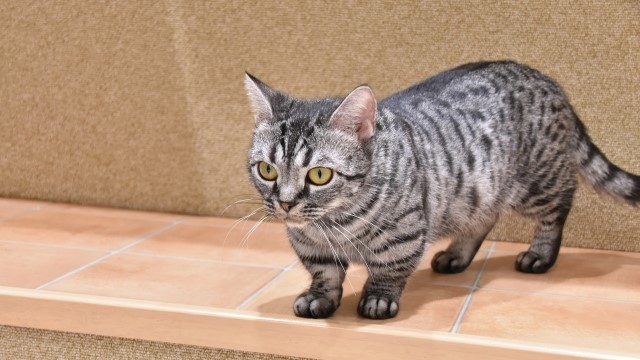Measuring Stress Levels in Cats: A Guide for Cat Owners
Introduction
Cats are known for their independent and sometimes enigmatic nature. While they often appear calm and composed, cats can experience stress just like humans. Identifying and measuring stress in cats can be challenging due to their subtle behavioral cues. This article explores various methods to assess stress levels in cats and offers guidance for cat owners on how to recognize and alleviate stress in their feline companions.

Understanding Cat Stress
Stress in cats can be triggered by a variety of factors, including changes in their environment, social dynamics, health issues, and even boredom. Chronic stress can lead to health problems and negatively impact a cat's overall well-being. Recognizing the signs of stress and taking steps to address it is crucial for maintaining your cat’s health and happiness.
Signs of Stress in Cats
Before diving into the methods for measuring stress, it’s important to recognize common signs that indicate your cat may be stressed:
- Behavioral Changes: Unusual behaviors such as increased aggression, hiding, excessive grooming, or decreased appetite can indicate stress.
- Vocalization: Increased or unusual vocalization, including meowing, growling, or hissing, can be a sign of stress.
- Litter Box Issues: Changes in litter box habits, such as urinating outside the box, can be a sign of stress or underlying health issues.
- Physical Symptoms: Stress can manifest physically as well, with symptoms like vomiting, diarrhea, or changes in weight.
- Body Language: Watch for signs like flattened ears, a tucked tail, dilated pupils, and a tense body posture, which can indicate stress.
Methods to Measure Stress in Cats
1. Behavioral Observation
Careful observation of your cat’s behavior is one of the most effective ways to assess stress levels. Keep a diary to track changes in behavior, including:
- Activity Levels: Note any significant changes in your cat's activity, such as lethargy or hyperactivity.
- Interaction: Monitor how your cat interacts with other pets and humans. Increased aggression or withdrawal can be signs of stress.
- Grooming: Excessive grooming or complete neglect of grooming can both indicate stress.
- Feeding Habits: Changes in appetite, such as eating more or less than usual, can be a sign of stress.
2. Physiological Measurements
Some physiological indicators can help measure stress in cats:
- Heart Rate and Respiratory Rate: Elevated heart and respiratory rates can be signs of stress. These can be measured using specialized veterinary equipment.
- Cortisol Levels: Cortisol, a stress hormone, can be measured in a cat’s blood, urine, or saliva. While not typically done at home, veterinarians can perform these tests to assess stress levels.
- Pheromone Levels: Monitoring the levels of certain pheromones can provide insights into stress. Pheromone sprays and diffusers, such as Feliway, can help reduce stress and can be part of both measuring and alleviating stress.
3. Environmental and Contextual Assessment
Assessing the environment and context in which your cat lives can provide insights into potential stressors:
- Changes in Environment: Identify any recent changes, such as moving to a new home, new furniture, or changes in the household.
- Social Dynamics: Consider the impact of new pets or people in the household and how they interact with your cat.
- Routine and Predictability: Cats thrive on routine. Disruptions to their daily schedule can cause stress.
4. Technological Tools
Modern technology offers innovative tools to help monitor your cat’s stress levels:
- Activity Monitors: Devices like pet activity trackers can provide data on your cat’s activity levels and sleeping patterns, helping you spot irregularities that may indicate stress.
- Cameras: Installing cameras can help you monitor your cat’s behavior when you’re not at home, providing insights into their stress levels in different situations.
CatsMe! is a revolutionary AI that makes it easy to detect such pain in cats by only uploading cat pictures.
CatsMe!|an AI app that makes it easy to detect pain in cats.
Strategies to Reduce Stress in Cats
Identifying stress is just the first step. Here are strategies to help reduce and manage stress in your cat:
- Provide a Safe Space: Ensure your cat has a quiet, comfortable place to retreat to when they feel stressed.
- Maintain Routine: Stick to a consistent daily routine for feeding, playtime, and grooming.
- Environmental Enrichment: Provide toys, scratching posts, and opportunities for mental and physical stimulation.
- Social Interaction: Spend quality time with your cat, engaging in activities they enjoy.
- Pheromone Products: Use pheromone diffusers or sprays to create a calming environment.
- Veterinary Care: Regular veterinary check-ups can help identify and address health issues that may be causing stress.
- Nutrition: Ensure your cat has a balanced diet and access to fresh water.
Conclusion
Measuring and managing stress in cats requires a keen understanding of their behavior and environment. By paying close attention to changes in behavior, using physiological and technological tools, and implementing strategies to reduce stress, you can help ensure your cat remains healthy and happy. If you suspect your cat is experiencing significant stress, consult your veterinarian for guidance and support. By proactively addressing stress, you can enhance your cat’s quality of life and strengthen your bond with your feline companion.
The Ever-Changing Health of Cats: Understanding and Monitoring Feline Wellness



“Measuring Stress Levels in Cats: A Guide for Cat Owners” に対して2件のコメントがあります。
コメントは受け付けていません。